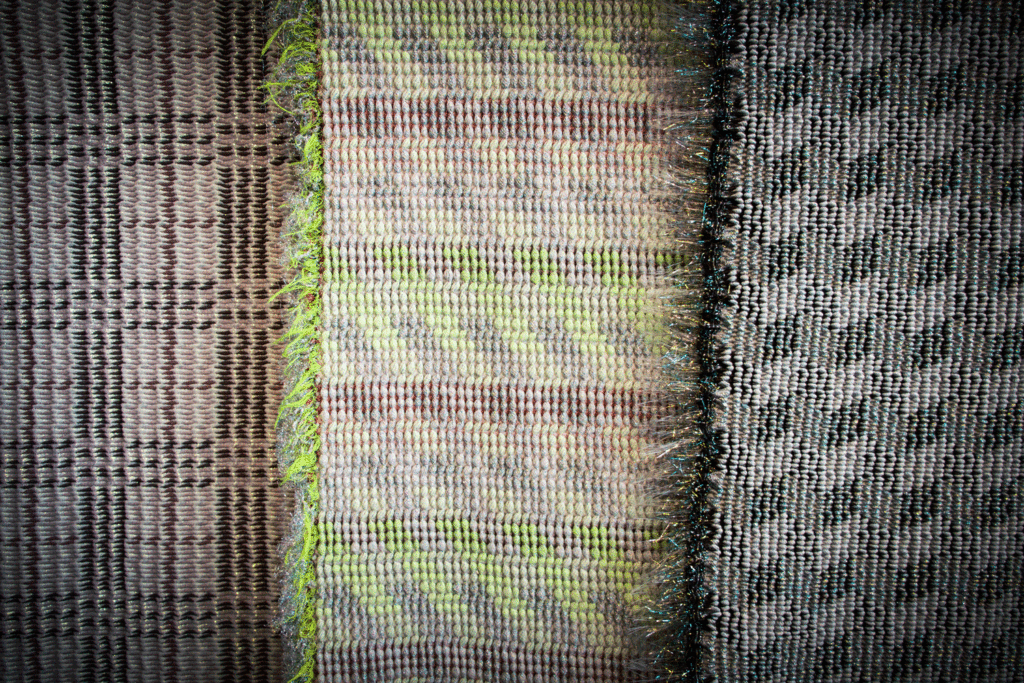 Students from The Swedish School of Textiles University of Borås exhibited at New Designers 2016. Three of the weavers are profiled below.
Students from The Swedish School of Textiles University of Borås exhibited at New Designers 2016. Three of the weavers are profiled below.
Surface Synergy -Â Woven 3D texture merged with pattern
Surface Synergy – Woven 3D texture merged with pattern, is an innovative textile project that explores digital jacquard woven textures in combination with pattern. A digital visualising tool is used to create complex multilayered bindings that in combination with carefully chosen materials transform the flat textile surface into a patterned 3D-texture.
Textile designer Johanna Samuelsson explains that shrinking is used to transform the flat surface into a texturized one. At the same time as the pattern is created in the loom, also the texture is formed. Or rather, there is an interwoven ability for shrinking; this action of transformation is planned at the same time as the rest of the weave. As long as it is held  in the loom, the fabric is under tension and little shrinking can occur. First after cutting down and steaming, the final result of the shrinking can be seen. This work proposes on-loom effects requiring minimal finishing processes.
Woven patterns, such as plaid and houndstooth, are updated by merging with texture, twisting the traditions of the flat patterned surface. One of the strength with mixing pattern with texture is the concept of sensory manipulation. Johanna states â€I think that if a design, somehow breaks with the assumed aesthetic, or its traditions, we might look upon the object and start to really see it, just because it is distorting with over expectations. I think that a texturised textile has the power to evoke curiosity since its dynamic surface distorts the pattern and breaks up the ground surface into several visual elements.â€
Weave structures were developed using a digital visualizing tool, which made it possible to create complex bindings in layers and combinations. The textiles consist of up to 16 different bindings. “The digital tool is a new opportunity for woven designers to create new expressions. The fundaments for weaving, the interlacements of threads are still the same, but how we develop these meetings are new with digital tools. I believe there is still a lot to explore in the loom and the digital tool is a way for these new developments.â€
The interrelation between texture and pattern, transformed by shrinking, twists with traditional patterns and weaving: creating expressions that have the ambition to evoke the viewer by surprise. “From a commercial point of view, I see this as a way for weaving to compete with other textile techniques: rather than trying to mimic their expressions, the strength within weaving is used as a commercial visual tool.â€
Surface Synergy was awarded John Lewis Loves commendation at New Designers with the motivation “Interesting exploration of yarn, technique and structure along with fabric behavior to create intriguing textiles“.
Technique: Digital jacquard weaving
Material: Elastane, lurex, cotton, polyester, transparent monofilament
About Johanna Samuelsson
Johanna Samuelsson is a textile designer based in Sweden. She was educated at The Swedish School of Textiles, graduating in spring 2016 with a master of fine arts in textile design. She has also studied art.
Her BA degree work in textile design “Reflection of the sun†has won several awards including the New Star Award at Shenzhen Design Award, a competition in cooperation and association with UNESCO Creative Cities.
Images and text: Johanna Samuelsson
Mirjam Hemström
Woven Air, Cubic Colorized – Three dimensional weaves and dyes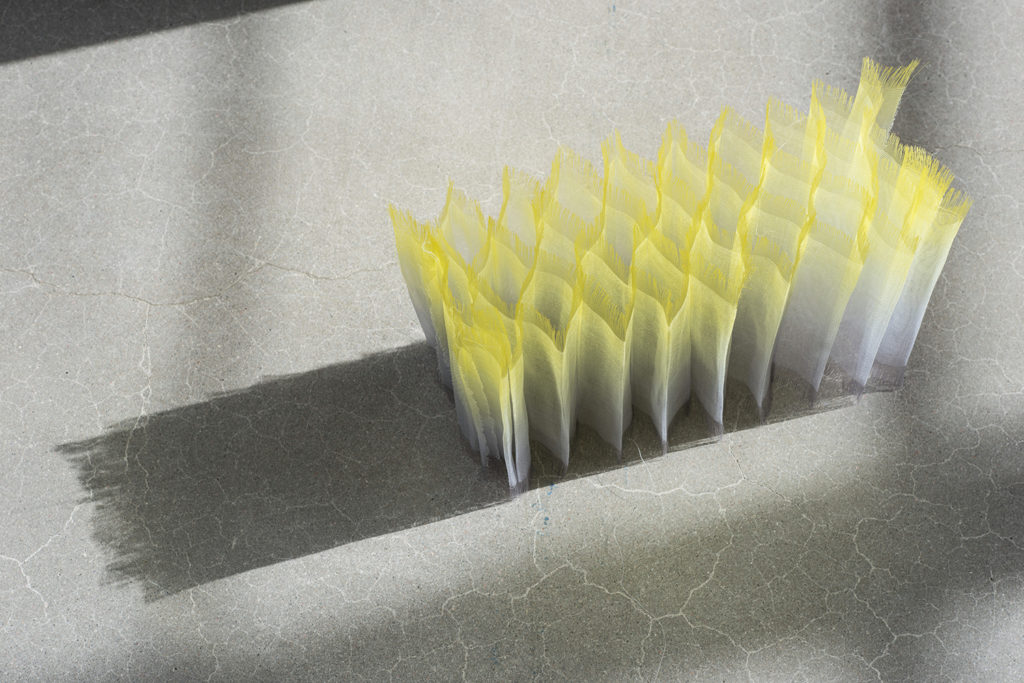
Woven Air, Cubic Colorized is a textile installation and an exploration of multi layer weaving and dyeing in order to create three dimensional textiles capable of changing the atmosphere of a space. The work combines industrial weaving and the work of the hand through dyeing. Through material, scale and repeated dye effects, the textile is put in relation to spatiality.
The multi layer weave has been the foundation for the work, a binding that challenges the textile as a surface, as Mirjam sees it. The weave is built up by many layers woven in parallel that regularly change place and create diamond shapes in the sidecut. By exposing the section, the weave becomes space rather than a surface. Moreover it can be folded, which creates a powerful experience by being tiny in its folded state but possess a high degree of performance, playing an essential role aesthetically, when exposed in its full apparition.
The multi layer weave suggests a structure of a space built up by horizontals and verticals, surfaces dyed in contrasting opposite colors where darkness encloses and light invites. In comparison to architecture, the weave has another flexibility and pliability. â€Hard materials are often regarded as superior to the soft, and for me it has been important to raise the value of and use the benefits of the textile.â€
There are similarities in the process of building and the process of weaving. The soft geometries and textural surfaces of textiles implemented in a space allow different social spaces and interactions to emerge. The soft materiality in a statically built environment creates a balance and, at the same time, an interesting tension. The soft structures of the weave allow something temporary to unfold, and suggest a new space. Mirjam believes that architectural spaces can be made of textiles. In Japanese architecture, traditional, as well as contemporary, space is regarded as an experience. Mirjam explains:
â€I believe that material, in my case textiles, can function as a human texture. My intention is to create textiles that dissolves and abstracts the space, by using the textiles’ flexibility, creating transparent layers and combine soft and hardâ€.
The work plays with strict constructions and lines with the intention to re-define spaces. An airy gradient has been dip-dyed to abstract the lines and create a diffuse pattern. â€Color plays an essential role in creating an ambience in a space. I like the idea of machine weaving my own canvas and add color to it. I always dreamt of being a painter and ever since textile became my way of expressing myself, this way of connecting weaving to dyeing to spatiality really fits me.â€Â Mirjam wants the textile to be part of the interior but have a strong character in itself. It can function as a light and color filter, effecting its surroundings. The transparent layers together with the monofilament’s ability to transport light and reflect light, can create an ambiguous atmosphere that cooperate to a spatial experience.
â€The textile joins different parts, designates a rhythm. It is an extended arm to the room. Thanks to its materiality and physicalness it becomes a mediator between space and human. Everything we feel and think, all our sensations relate to and interact with space. There is private and public space, vacant space, open space, hollow space, hidden space, forgotten space, interspace. So does also this work relate to space. An inner room takes possession of an outer. An outer room seeps into an inner. â€
Technique: Dobby machine weaving and dip-dyeing
Material: Monofilament polyamide and monofilament polytene, acid dyes
About Mirjam Hemström

Mirjam Hemström is a textile designer based in Stockholm, Sweden. Grown up at the Northern High Coast, she finds much of her inspiration in the landscape close to the sea. She graduated from her bachelor in textile design at the Swedish School of Textiles in 2016, and places her work within spatial textile design with a handicraft touch.
Text: Mirjam Hemström
Images: Jan Berg and Axel Larsson
Statira Jazayeri
Sculptural Textiles -Â Exploring sculptural possibilities in woven textiles through construction and contrasting yarns.
Sculptural Textiles is the degree project of recently graduated textile designer Statira Jazayeri. The project explores the relation between contrasting yarn combinations and sculptural possibilities for machine woven textiles. The aim has been development of fabrics that can be shaped by hand, and thus adaptable to various settings. The essence lies in the subtle meeting between contrasts such as shiny-dull, elastic-stiff, transparent-opaque, natural and synthetic and how these meetings can create sculptural qualities. Construction and especially density are tools to bring forth the beauty and function of the yarns.
The idea emerged when Statira was working on her pre-study earlier in the semester. At that time she was exploring elasticity in weaving on a textural scale. The final results of that study lead to samples with sculptural qualities that triggered her curiosity to explore that in a larger scale.
Statira’s interest in details and material is very apparent, she states: “I wanted to work closely with material, so it was very important to me to enhance the qualities of the raw material in the yarns and use them in a way true to their characteristics”. The fabrics are machine woven and then manipulated by hand, thus combining the industrial way of producing textiles with the work of the hand. The latter being a way to get to know the behaviour of the materials even more.
Sculptural Textiles is a suggestion for a new kind of woven material that has its place in the borderland between art and functional textiles. Depending on the material combinations and how the textile is manipulated by hand it can be applied in different ways. For example, the brown linen and metal fabric (steel and copper) can be used as a decorative curtain, and if woven in wool and metal it could have sound absorbing qualities due to the material and its three dimensional shape. Furthermore the metal yarns allows freedom to shape the textile to suit the environment. Function and decoration is again apparent in the pleated textiles. They are beautiful to look at and could work as decorative elements in a room as well as being utilized as dividers, letting sunlight through or block vision depending on the densities of the material.
About Statira Jazayeri
Statira has a background in fashion, educated at ESMOD Oslo as a fashion designer and haute couture draper which laid the foundation of her devotion to work closely with fabric. Her interest in technical materials, weaving and texture lead her in the direction of creating textiles. In June 2016 she graduated with a Bachelor of Fine Arts in textile design from The Swedish School of Textiles.
To see the flexibility of the fabrics please click this video link:Â www.statirajazayeri.com/sculpturaltextiles-pzge
Technique: 8 and 16 shaft dobby machines, hand pleated, freely shaped by hand
Material: linen, stainless steel, copper, transparent monofilament, black monofilament and wool.
Text: Statira Jazayeri. Images: Jan Berg
The Swedish School of Textiles РUniversity of Bor̴s

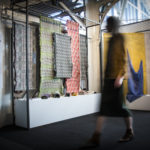
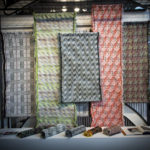
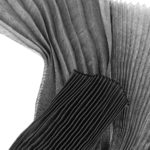
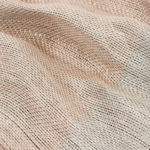
Leave a Reply